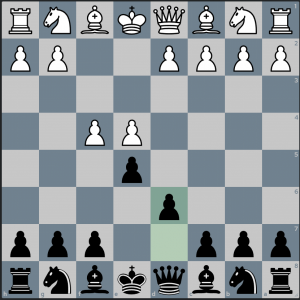Greetings, fellow chess enthusiasts! Today, we’re diving into one of the most beloved and respected defenses in all of chess – the Sicilian Defense. Primarily employed against 1.e4, this approach offers Black dynamic counterattacking chances and a myriad of strategic plans.
Why the Sicilian Defense?
The Sicilian Defense is a versatile and aggressive choice, capable of generating rich middlegame positions. But what makes it so universally admired?
Unbalanced Positions
The Sicilian Defense leads to unbalanced positions, which can be more difficult for your opponent to navigate. This imbalance often translates to exciting games and higher chances of winning as Black.
Counterattacking Potential
The Sicilian Defense provides Black with strong counterattacking potential. Instead of passively responding to White’s threats, Black gets ample opportunities to seize the initiative.
Variety of Structures
The Sicilian Defense can lead to a variety of pawn structures, each with unique strategic ideas. This versatility can keep your opponents guessing and out of their comfort zone.
Sicilian Defense: Key Moves and Concepts
The Sicilian Defense kicks off with:
- e4 c5
Let’s explore some critical lines and variations within the Sicilian Defense, focusing on the Open Sicilian:
The Open Sicilian
The Open Sicilian arises after:
- Nf3 (White develops a knight, preparing to control the center with d2-d4) followed by… d6 (Black bolsters the e5 square and prepares to develop the knight to f6)
- d4 (White pushes the d-pawn, challenging Black’s setup)
From here, we delve into a couple of significant subvariations:
The Scheveningen Variation
Named after a Dutch seaside town, the Scheveningen Variation is characterized by a flexible pawn structure for Black. After 1.e4 c5 2.Nf3 d6 3.d4 cxd4 4.Nxd4 Nf6 5.Nc3 e6, Black maintains a compact structure, preparing to launch counterattacks once White reveals their plans.
The Najdorf Variation
The Najdorf Variation is one of the most respected and widely played lines in the Sicilian Defense. It begins as 1.e4 c5 2.Nf3 d6 3.d4 cxd4 4.Nxd4 Nf6 5.Nc3 a6. The a6 move is multifunctional: it prepares for a potential b5 advance, helps control the b5 square, and adds some robustness to Black’s pawn structure.
Digging Deeper into the Sicilian Defense
To help you expand your knowledge of the Sicilian Defense, I recommend these engaging YouTube videos:
Videos
ChessNetwork’s “Sicilian Defense” Series: A comprehensive exploration of the Sicilian Defense, packed with instructive games and commentary. Watch it here.
Hanging Pawns’ “Sicilian Scheveningen” Guide: Get to know this crucial subvariation with practical examples and clear explanations. Find it here.
thechesswebsite’s “Sicilian Najdorf” Guide: Gain an in-depth understanding of this revered variation, complete with key strategic ideas. Check it out here.
Conclusion: Mastering the Sicilian Defense
The Sicilian Defense is a powerful weapon in any chess player’s arsenal. Its rich positional play and counterattacking opportunities make it an exciting and formidable response to 1.e4. With practice and a solid understanding of its key lines and strategies, you can confidently command the board with the Sicilian Defense. Stay tuned for our next post, where we’ll dive deeper into the fascinating world of the Sicilian Dragon variation!




